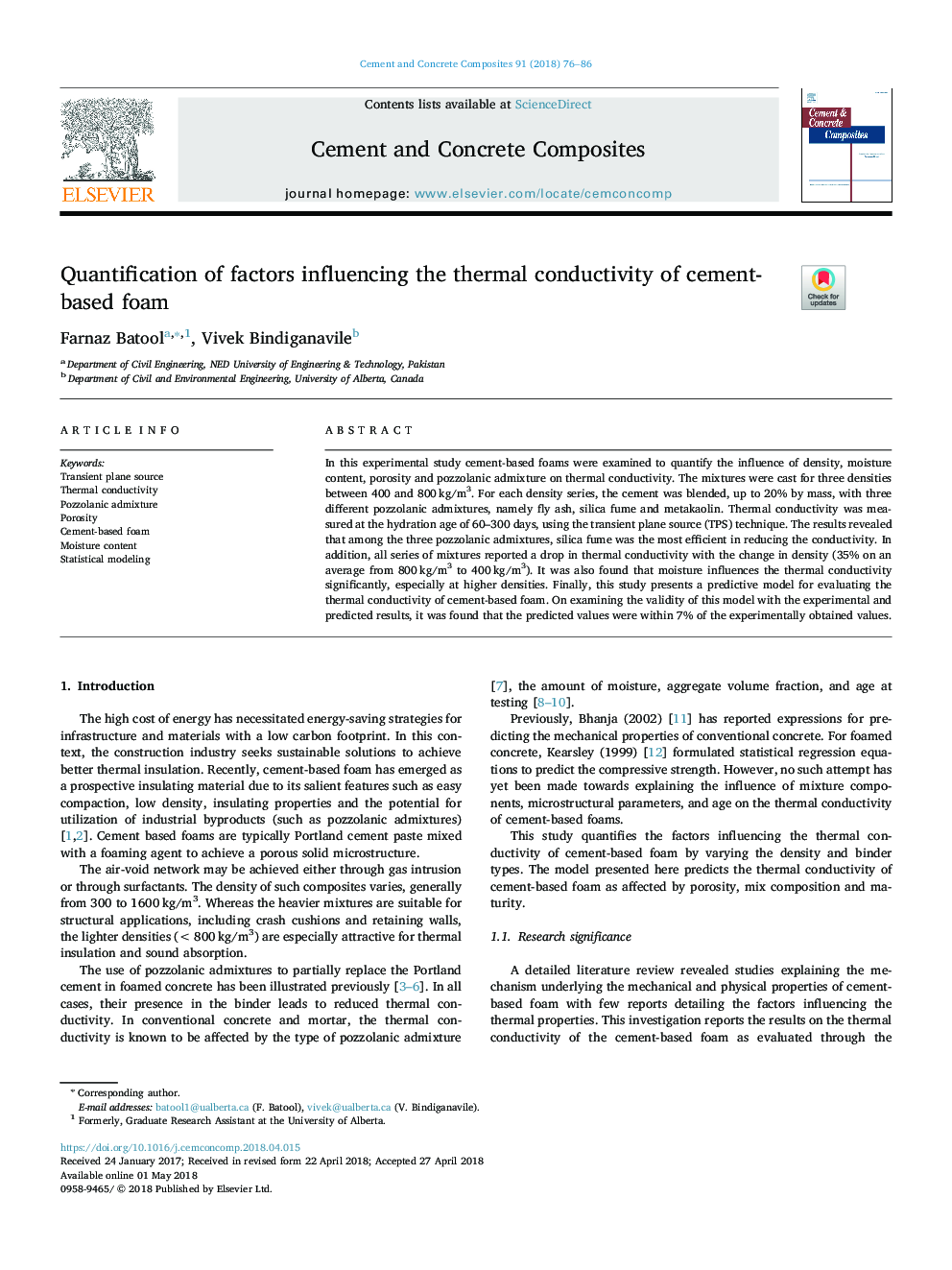| Article ID | Journal | Published Year | Pages | File Type |
|---|---|---|---|---|
| 7883621 | Cement and Concrete Composites | 2018 | 11 Pages |
Abstract
In this experimental study cement-based foams were examined to quantify the influence of density, moisture content, porosity and pozzolanic admixture on thermal conductivity. The mixtures were cast for three densities between 400 and 800â¯kg/m3. For each density series, the cement was blended, up to 20% by mass, with three different pozzolanic admixtures, namely fly ash, silica fume and metakaolin. Thermal conductivity was measured at the hydration age of 60-300 days, using the transient plane source (TPS) technique. The results revealed that among the three pozzolanic admixtures, silica fume was the most efficient in reducing the conductivity. In addition, all series of mixtures reported a drop in thermal conductivity with the change in density (35% on an average from 800â¯kg/m3 to 400â¯kg/m3). It was also found that moisture influences the thermal conductivity significantly, especially at higher densities. Finally, this study presents a predictive model for evaluating the thermal conductivity of cement-based foam. On examining the validity of this model with the experimental and predicted results, it was found that the predicted values were within 7% of the experimentally obtained values.
Related Topics
Physical Sciences and Engineering
Engineering
Industrial and Manufacturing Engineering
Authors
Farnaz Batool, Vivek Bindiganavile,
